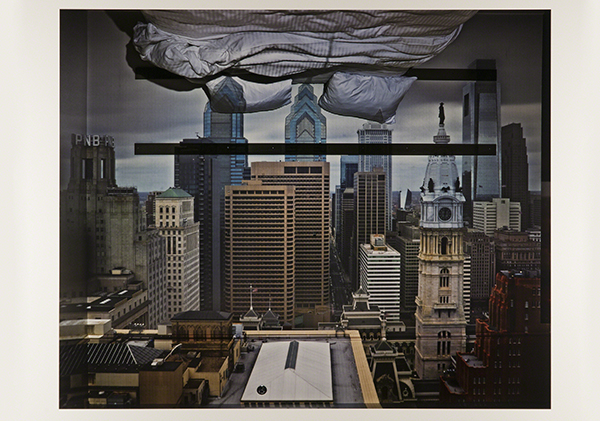Caribbean American Heritage Month: Abelardo Morell
Caribbean peoples have had a major impact on culture in the Americas since forever, and that holds especially true in the arts.
 |
| Abelardo Morell (born 1948, Cuba/U.S.), Camera Obscura: View of Philadelphia from Loews Hotel Room #3013 with Upside Down Bed, 2014. Pigment print on Dibond, 4 ½' x 5' (123.2 x 152.4 cm). Courtesy of the Philadelphia Museum of Art. © 2022 Abelardo Morell. (PMA-8413) |
Artist Abelardo Morell realized that any space could be turned into a camera, perfecting the technique over the years. His early camera obscura (meaning “dark chamber”) images required long exposure times, but that has been shortened with digital technology. Morell can now capture certain times of day instead of waiting for hours to pass. This view of Philadelphia reveals how the camera obscura image is projected into the darkened space upside down. Morell then digitally photographs its image on the wall to create a disturbing, yet fascinating and surreal, view of the world.
During the mid-1900s, artists from countries such as Brazil, Venezuela, Colombia, Cuba, and Mexico felt obliged to immigrate either to Europe or the United States to further their careers. The persistence of traditional techniques of expression amid imitations or adaptations of avant-garde movements from Europe and the U.S. is the hallmark of Latin American modernism since the mid-1900s. In Cuba, by the mid 1940s there were two schools of thinking about the exploration of modernism: those who embraced foreign (primarily European) modernist movements whole heartedly, and those who digested the modern movements and applied their own personal vocabulary to those styles.
What this engendered was a group of artists who considered themselves members of an international avant-garde, and those who were members of the Cuban avant-garde. Because of the communist state in Cuba, many Cuban artists immigrated to the U.S. and Europe in order to freely express avant-garde styles, rather than the state-sponsored social realism.
Morell was born in Havana, Cuba, and his family immigrated to the U.S. in 1962. He earned a BFA from Bowdoin College (1977) and an MFA from Yale (1981). He was always interested in the mechanics of optics, and his early works focused on still-life objects. While a professor of photography at MassArt, where he taught from 1983 to 2010, he experienced an epiphany teaching the basic tenet in photography of light passing through an aperture, and its projected image. Morell discovered the power of documenting the passage of time with camera obscura.
As early as the 400s BCE in China, it was observed that the reflected light rays of an illuminated object passing through a pinhole into a darkened enclosure created an inverted, but exact, image of the object. During the Renaissance (ca. 1400–1600) in Europe, artists who desired to create more realistic landscapes and perspective in paintings pursued the pinhole idea and came up with the concept of the camera obscura. The original camera obscura was a room-sized chamber with one small opening fitted with a lens. The image was inverted and not perfectly sharp but provided the artist with a realistic image to sketch for a later painting. During the 1600s, a portable camera obscura was invented.
Correlations to Davis Programs: Focus on Photography 2E: p. 9, p. 14; The Visual Experience 4E: 9.1

Comments